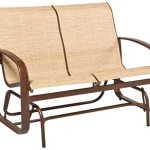How To Choose Living Room Furniture: A Comprehensive Guide
Selecting living room furniture is a multifaceted process that requires careful consideration of several factors. The living room often serves as the central gathering space within a home, functioning as both a relaxation area and a space for entertaining guests. Therefore, the furniture chosen must be aesthetically pleasing, comfortable, and functional, seamlessly integrating with the existing architectural style and meeting the specific needs of the homeowners.
The process of furnishing a living room should not be approached haphazardly. A strategic approach, commencing with a clear understanding of the room's dimensions, intended usage, and desired aesthetic, will yield a more cohesive and satisfying result. This guide will explore key considerations to ensure informed decisions when selecting living room furniture.
1. Assessing Space and Layout
Before commencing any furniture shopping, it is imperative to meticulously measure the living room's dimensions. Accurate measurements are crucial for determining the appropriate scale and quantity of furniture pieces that can comfortably fit within the space without creating a cramped or cluttered environment. These measurements should encompass the length, width, and height of the room, including any architectural features such as windows, doorways, and fireplaces.
In addition to measuring the room's perimeter, it is equally important to consider the flow of movement within the space. Identify the primary entry points and pathways. Furniture placement should facilitate easy navigation throughout the room, avoiding obstructions that impede movement or create awkward bottlenecks. Consider how individuals will circulate through the space when determining the placement of larger items such as sofas and coffee tables.
The room's layout should be carefully planned to maximize functionality and create a sense of balance and harmony. Consider the focal point of the room, which is often a fireplace, window with a scenic view, or a television. Arrange furniture around this focal point to create a visually appealing and inviting seating arrangement. Avoid placing furniture in a way that blocks natural light or obstructs views.
Consider creating a scaled floor plan of the living room. This can be done using graph paper or digital design tools. Experiment with different furniture arrangements on the floor plan before making any purchases. This will help visualize how the furniture will fit within the space and identify potential problem areas. Using painter's tape on the floor to mark the dimensions of potential furniture pieces can also provide a tangible sense of scale.
Vertical space is also a consideration. High ceilings can accommodate taller bookshelves or artwork, while low ceilings may benefit from lower-profile furniture to create a sense of spaciousness. Wall space should also be considered for artwork, mirrors, or floating shelves. A well-planned layout will make the most of the available space, creating a comfortable and functional living room.
2. Defining Style and Functionality
The aesthetic style of the living room furniture should complement the overall architectural design of the home and reflect the homeowner's personal preferences. Consider the existing color palette, flooring, and wall décor when selecting furniture. Consistency in style will create a cohesive and harmonious living space. Consider popular styles such as modern, traditional, contemporary, bohemian, or eclectic. Each style has its own distinctive characteristics and visual appeal.
Different furniture styles lend themselves to different functionalities. For example, a modern living room may prioritize clean lines, minimal ornamentation, and functional storage solutions. Traditional living rooms often feature more ornate details, plush upholstery, and a focus on comfort and formality. Contemporary living rooms blend elements of modern and traditional styles, offering a balanced and versatile aesthetic. Bohemian living rooms embrace a more relaxed and eclectic vibe, featuring a mix of textures, patterns, and vintage finds.
Beyond aesthetics, the functionality of the furniture is paramount. Consider the primary activities that will take place in the living room. Will it primarily be used for relaxing and watching television? Or will it serve as a space for entertaining guests and engaging in conversation? The intended usage of the room will dictate the type and configuration of furniture needed. A living room designed for relaxation may prioritize comfortable seating, such as a large sectional sofa and plush armchairs. A living room designed for entertaining may benefit from more formal seating arrangements, such as a sofa and loveseat combination, along with accent chairs and cocktail tables.
Storage is another important functional consideration. Living rooms often accumulate clutter, such as books, magazines, remote controls, and blankets. Incorporating storage solutions into the furniture design can help keep the space organized and visually appealing. Consider furniture pieces with built-in storage, such as coffee tables with drawers or shelves, media consoles with cabinets, and bookshelves. Baskets and decorative boxes can also be used to conceal clutter and add visual interest.
Durability and maintenance are also key functional factors to consider. Choose furniture materials that are appropriate for the intended usage and lifestyle. For example, families with young children or pets may opt for furniture upholstered in durable, stain-resistant fabrics. Leather furniture is also a popular choice for its durability and easy maintenance. Wood furniture should be treated with a protective finish to resist scratches and stains. Consider the long-term upkeep required for each furniture piece before making a purchase.
3. Material Selection and Upholstery Choices
The materials used in living room furniture play a crucial role in its overall appearance, durability, and comfort. The selection of materials should be guided by considerations of style, budget, and intended usage. Wood, metal, glass, and upholstery fabrics are common materials used in living room furniture. Each material offers unique aesthetic and functional properties.
Wood is a versatile material that can be used in a variety of furniture pieces, including sofas, chairs, tables, and shelving. Different types of wood offer varying levels of durability and aesthetic appeal. Hardwoods, such as oak, maple, and cherry, are known for their strength and durability. Softwoods, such as pine and cedar, are more affordable but may be less resistant to scratches and dents. The finish applied to the wood can also significantly impact its appearance. Stained wood offers a classic and timeless look, while painted wood can add a touch of color and modernity.
Metal is often used in modern and contemporary living room furniture. It is known for its strength, durability, and sleek aesthetic. Metal frames are commonly used in sofas, chairs, and tables. Metal accents can also be incorporated into wood furniture to add a touch of industrial chic. Different types of metal, such as steel, aluminum, and wrought iron, offer varying levels of durability and resistance to corrosion.
Glass is often used in coffee tables, end tables, and shelving. It adds a touch of elegance and sophistication to the living room. Glass tops can be either tempered or laminated to enhance their safety and durability. Clear glass allows light to pass through, creating a sense of spaciousness. Tinted glass can add color and visual interest.
Upholstery fabrics play a crucial role in the comfort and appearance of sofas, chairs, and ottomans. The selection of upholstery fabrics should be guided by considerations of style, durability, and maintenance. Natural fibers, such as cotton, linen, and wool, are breathable and comfortable. Synthetic fibers, such as polyester and microfiber, are more durable and stain-resistant. Leather and faux leather are also popular upholstery options, offering a luxurious look and feel.
The color and pattern of the upholstery fabric can have a significant impact on the overall aesthetic of the living room. Neutral colors, such as beige, gray, and white, are versatile and can be easily coordinated with other furniture and décor. Bold colors and patterns can add personality and visual interest. Consider the existing color palette of the living room when selecting upholstery fabrics. Smaller patterns tend to work well in smaller spaces, while larger patterns can be used in larger spaces.
The texture of the upholstery fabric can also enhance the tactile appeal of the furniture. Smooth fabrics, such as velvet and silk, offer a luxurious and elegant feel. Textured fabrics, such as tweed and linen, add visual interest and depth. Consider the overall aesthetic of the living room when selecting upholstery textures.
4. Budget Considerations and Prioritization
Establishing a realistic budget is a critical step in the furniture selection process. Living room furniture can range in price from very affordable to extremely expensive, depending on the quality of materials, craftsmanship, and brand reputation. Before commencing any shopping, determine the maximum amount that can be allocated to furniture purchases.
Once a budget is established, prioritize the essential furniture pieces. Typically, the sofa or sectional is considered the most important investment, as it serves as the primary seating area in the living room. Prioritize quality and comfort when selecting a sofa, as it will likely be used frequently and for extended periods of time. Other essential pieces may include a coffee table, end tables, and lighting fixtures.
Consider allocating a smaller portion of the budget to accent pieces, such as throw pillows, blankets, and decorative accessories. These items can add personality and visual interest to the living room without breaking the bank. These items can be easily replaced or updated as preferences change.
Explore different furniture retailers and compare prices before making any purchases. Online retailers often offer competitive prices and a wider selection than traditional brick-and-mortar stores. Consider shopping during sales and promotions to save money. Clearance sections and outlet stores can also offer significant discounts on furniture.
Consider purchasing used or vintage furniture pieces. These items can often be found at thrift stores, antique shops, and online marketplaces at a fraction of the cost of new furniture. Used furniture may require some cleaning or repairs, but it can be a cost-effective way to furnish a living room with unique and characterful pieces.
Prioritize quality over quantity. It is often better to invest in a few high-quality furniture pieces that will last for many years rather than purchasing a larger quantity of lower-quality items that may need to be replaced sooner. Durable furniture will ultimately save money in the long run.

How To Choose Living Room Furniture 15 Steps With S

How To Choose The Best Seating For Your Living Room Erin Spain

5 Tips To Pick The Right Living Room Seating Pottery Barn

How To Choose Living Room Furniture 15 Steps With S

What To Consider When Buying Your Living Room Furniture Pottery Barn
Types Of Living Room Furniture

How To Choose Living Room Furniture 15 Steps With S

How To Choose The Perfect Sofa For Living Room A Complete Guide 2024

How To Choose Living Room Furniture That S Right For Your Lifestyle Home Zone

How To Choose Furniture For Your Home Pick
See Also








